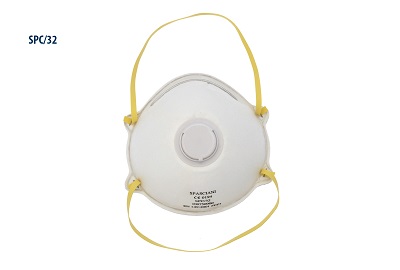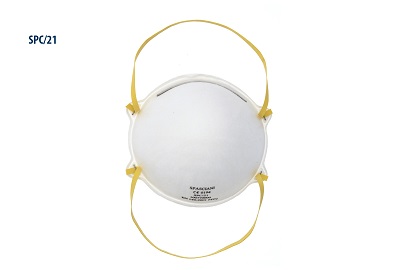March 06, 2020 Standards, Respiratory Protective Devices and the Coronavirus: The truth about filtering half masks
By: Alberto Spasciani
With the outbreak of Coronavirus (Covid-19), a general state of panic has erupted in some countries. In the European Union, some member states have introduced preventive measures to contain the situation. At the same time, public level demand for filter masks has increased. While filter masks alone cannot guarantee complete protection, they are effective in some situations. In this article, SME Safety provides information about the regulatory framework governing Personal Protective Equipment (PPE), different types of filter masks certified as PPE, and their usage.
An overview of Personal Protective Equipment (PPE)
Personal Protective Equipment (PPE) is regulated by Regulation (EU) 2016/425, which repeals and replaces Directive 89/686/CEE. This regulation requires manufacturers of PPE to comply with "essential health and safety requirements”. Within this regulatory framework, Article 3(1) PPE is primarily defined as: “Equipment designed and manufactured to be worn or held by a person for protection against one or more risks to that person's health or safety”
A subset of PPE, Respiratory Protective Devices (RPD) deals with products that provide breathing protection. To allow RPD products in the internal market and apply the CE mark, these products must be compliant with the requirements of the Regulation. European standards (EN) help manufacturers to comply with these requirements. Currently, there are around forty European standards, issued by CEN, and applied according to the type of the product. The following table provides a summary of standardised filter masks.
1. Filtering facepieces The European standard EN 149 specifies requirements for filtering half-masks to protect against particles. This standard is commonly used to assess the compliance with the requirements of the PPE Regulation before placing the masks in the European market. The standard classifies masks according to their efficiency into three levels FFP1, FFP2, and FFP3. FFP3 have the highest filtering efficiency of 98% with 0.3 µm particles. Only FFP3 and FFP2 are recommended for protection, while FFP1 masks are insufficient for the current situation around the Coronavirus (CoV-19).
Some masks are equipped with valves, while others are not. A valve is a device attached to the filter that allows more comfortable breathing and reduces heating of the filter element. The valve itself is not a filter and does not increase nor enhance protection in any way. Efficiency of the mask is still governed by its classification (FFP1, FFP2, or FFP3). Therefore, a mask with a valve should be certified via the EN 149 standard with a valid CE marking followed by the number of the Notified Body that authorises its commercialisation. (Fig. 1a & 1b) Fig 1a: EN 149 certified filtering mask with valve.
Fig 1b: EN 149 certified filtering mask without valve.
2. Elastomer and techno-polymer half masks Elastomer and techno-polymer half masks are regulated by the standards EN 140 and their filters by EN 143. If equipped with a P2 or P3 replaceable filter, they can be considered protective. In such cases, the filtering efficiency of these masks is comparable to FFP1 and FFP2 masks (see above), with the advantage of a smoother adaptation to the face as they may come in different sizes and be automatically adjusted to the facial features. They can also be a viable alternative should filtering facepieces become scarce. (Fig. 2).
Fig 2: EN 140, EN 143 certified half mask 3. Medical masks Requirements for medical masks are specified by Standard EN 14683. The primary function of medical masks is to protect patients from contamination through medical staff (i.e. protecting a patient on the operating table from catching an infection from the health professionals operating on them) rather than protecting the person wearing them (Fig. 3).
Fig 3: EN 14683 medical mask Generally, those medical masks can still prevent the carrier from spreading infections, but they do not have the same efficiency in protecting persons wearing them from getting infected. In short, medical masks protect the “outside world” from my spreading droplets while FFP masks protect myself from inhaling the droplets from outside.
Masks that are not protective Oftentimes, especially in large shopping malls, unclassified and unmarked masks (referred to as “comforts”) do not protect against anything and should never be used, not even against common dust. The package should clearly indicate that "this mask is not certified for protection against particles”.
Usage and Protection
The protection of FFP-classified devices is guaranteed only if they are well adjusted to the face. The mask needs to be adjusted based on facial features, i.e. nose and chin shape, face breadth, etc. Protection is not guaranteed for persons with facial hair. As can be clearly observed with disposable medical masks, they do not grant a tight fit on the wearer’s face. It is always important to carefully read instructions before wearing a mask. In addition, please make sure to replace a FFP after four hours of continuous wearing at the latest. When disposing of them, make sure not to touch the filtering material (usually white) to avoid the contamination of your hands. Wash your hands carefully for 60 seconds before wearing a new mask. Do not displace the mask during use, or if so, replace the mask as previously indicated.
Wearing masks for protection is necessary for those who work with sick or infected people. In such cases, in addition to masks, the body needs to be protected (suits, glasses, gloves). Masks are also useful in crowded areas as a preventive measure, where it is assumed that infected people are around within a few meters. Since infection spreads through the release of droplets through coughing or sneezing, masks help to reduce chances of catching an infection. However, masks are useless if they are worn in non-crowded places or around healthy people that are not contagious.
Our general advice is to not panic. Only by making rational decisions can effective prevention be achieved. You can stay safe by following the steps recommended by WHO , without buying masks that are ineffective for the intended purpose and thereby risking to leave medical personnel without this crucial equipment.
Note: Outside of Europe, N95 or N99 certified masks are equivalent in use, efficiency and limitations to FFPs.
|
News
| SBS Webinar - Smart Textiles Standardisation Monday, November 21, 2022 |
| SBS Forum 2022 on PPE and Textile Care: Standardisation in the PPE sector – From dual to multi compliance Wednesday, October 19, 2022 |
| SBS Forum on PPE and Textile Care 2021 Monday, October 04, 2021 |




